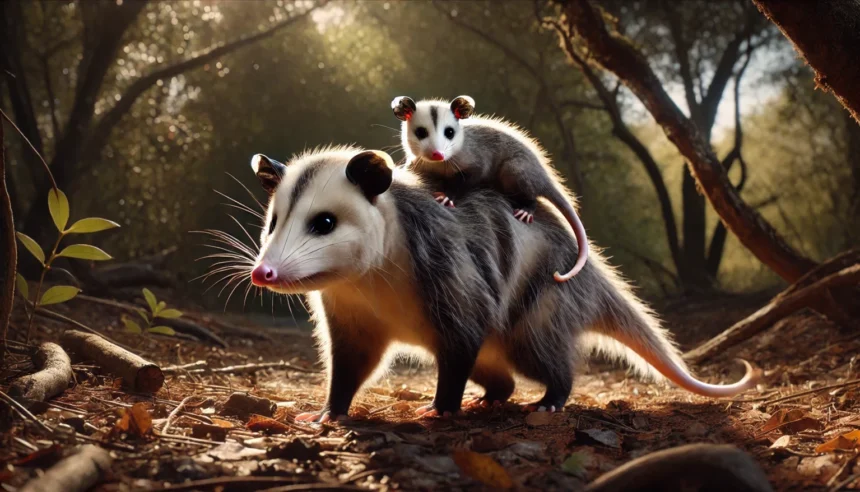Have you ever heard of the tñacuache? This unique creature may not be on your radar, but it plays a vital role in our ecosystems. Often overlooked and misunderstood, the tñacuache is more than just another animal; it’s an unsung hero working tirelessly behind the scenes. From controlling insect populations to helping with seed dispersal, this remarkable marsupial deserves our attention and admiration. Let’s dive into what makes the tñacuache so special and why we should all care about its place in nature.
What is a Tñacuache?
The tñacuache, also known as the opossum, is a fascinating marsupial native to the Americas. With its distinctive pointed snout and long prehensile tail, it has a unique appearance that sets it apart from other mammals.
These nocturnal creatures are primarily found in forests, grasslands, and even urban areas. They measure about 15 to 20 inches in length and have thick fur that varies in color from grayish-white to brown.
One of the most interesting aspects of the tñacuache is its ability to “play dead” when threatened. This remarkable defense mechanism can trick predators into thinking they’ve found an unappetizing meal.
Tñacuaches are omnivores with diverse diets. They feast on fruits, insects, small animals, and even carrion. Their adaptable nature helps them thrive in various environments while contributing significantly to their ecosystems.
The Importance of Tñacuaches in Ecosystems
Tñacuaches, commonly known as opossums, play a crucial role in maintaining the balance of our ecosystems. These nocturnal creatures are nature’s cleaners, consuming pests like ticks and rodents that can spread disease.
By feasting on these unwanted guests, tñacuaches help to control populations that could otherwise spiral out of control. This natural pest management reduces the need for harmful chemicals in our environment.
Additionally, they serve as scavengers. They consume carrion and waste materials, preventing the spread of bacteria and other pathogens. Their presence contributes to healthier soil and cleaner habitats.
Moreover, tñacuaches have a unique ability to tolerate certain toxins found in plants like poison ivy. This adaptability not only aids their survival but also helps maintain plant diversity within their range by controlling invasive species through selective feeding practices.
Misconceptions About Tñacuaches
Many people often confuse tñacuaches with common pests, but this perception is misguided. These remarkable creatures, known scientifically as opossums, play a vital role in their habitats.
One prevalent misconception is that tñacuaches are aggressive. In reality, they are quite timid and prefer to avoid confrontation. When threatened, they may feign death instead of attacking.
Another myth suggests that tñacuaches carry harmful diseases. While it’s true that any wild animal can host parasites or pathogens, studies show that these animals have an incredible resistance to rabies.
Some believe these marsupials raid gardens endlessly. However, they primarily feed on insects and small rodents—making them valuable allies for pest control in our backyards!
Understanding the truth about tñacuaches helps shift perceptions from fear to appreciation for their contributions to ecosystems.
Threats to Tñacuache Populations
Tñacuaches face numerous threats that jeopardize their survival. Habitat loss is one of the most pressing issues. As urban areas expand, forests and wetlands where these creatures thrive are being destroyed.
Pollution poses another significant risk. Contaminated environments affect their food sources, leading to health problems for tñacuaches and disrupting their role in ecosystems.
Road traffic adds an additional layer of danger. Many tñacuaches become victims of vehicles as they traverse roadways in search of food or shelter.
Moreover, hunting and poaching remain a concern in some regions. Misunderstood as pests, these animals are often targeted unfairly.
Climate change also plays a part by altering habitats and affecting seasonal patterns critical for tñacuache populations. Each threat compounds the impact on this vital species within our ecosystems.
Efforts to Protect and Preserve Tñacuaches
Conservationists and wildlife organizations are increasingly recognizing the value of tñacuaches in maintaining healthy ecosystems. Numerous initiatives focus on habitat restoration to ensure these unique marsupials thrive.
Local governments have also joined forces with environmental groups. Together, they create protected areas that provide safe havens for tñacuaches, allowing them to roam freely without human interference.
Awareness campaigns play a crucial role as well. Educating communities about the ecological benefits of tñacuaches fosters a sense of responsibility toward their preservation. People begin to understand how vital these creatures are in pest control and seed dispersal.
Research projects aim to monitor tñacuache populations more effectively. By tracking their movements and behaviors, scientists can develop targeted strategies that address specific threats they face in the wild.
Grassroots efforts encourage community involvement too. Volunteers participate in clean-up drives and tree-planting events, enhancing habitats where these remarkable animals live.
How You Can Help Tñacuaches and Their Ecosystems
Supporting tñacuaches starts with awareness. Educate yourself and others about their role in the ecosystem. Share facts on social media or at community events.
Creating a wildlife-friendly garden can also make a difference. Plant native species that attract insects and other small animals, providing food for tñacuaches. Avoid using pesticides; they harm both plants and local fauna.
Participating in clean-up efforts helps protect their habitats too. Trash not only clutters but can endanger wildlife by contaminating food sources.
Consider supporting local conservation organizations focused on protecting tñacuache populations. Donations or volunteering time can significantly impact these initiatives.
If you encounter a tñacuache, observe from a distance rather than disturbing it. Your respect for its space contributes to its well-being in the wild.
Conclusion
Tñacuaches, often overlooked and misunderstood, play a vital role in our ecosystems. Their unique behaviors contribute to the health of their habitats. By understanding these creatures better, we can appreciate their importance and work towards protecting them.
Awareness is key in promoting conservation efforts. Supporting local initiatives helps maintain the delicate balance of nature that tñacuaches are a part of. Every small action contributes to preserving this unsung hero for future generations.
As individuals, we have the power to make a difference. Whether it’s educating others or participating in community programs focused on wildlife preservation, every effort counts. The more we learn about tñacuaches and their environments, the better equipped we become to advocate for their protection.
Embracing our role as stewards of the environment ensures that these remarkable animals continue to thrive alongside us. Let’s commit ourselves to safeguarding not just tñacuaches but also the rich tapestry of life they help sustain.







